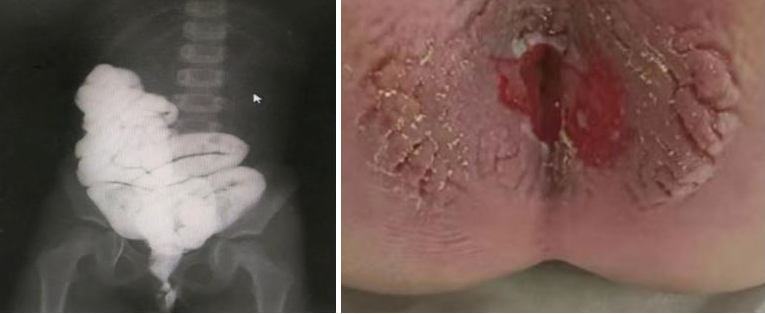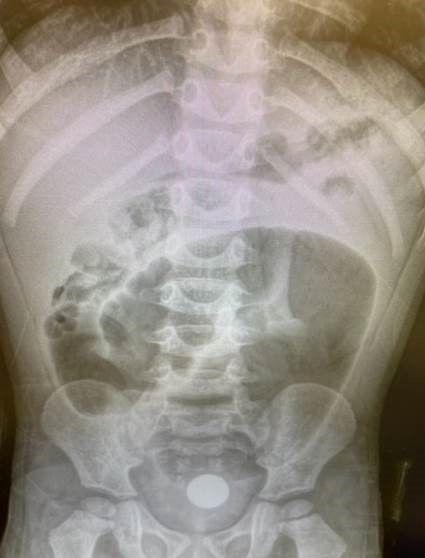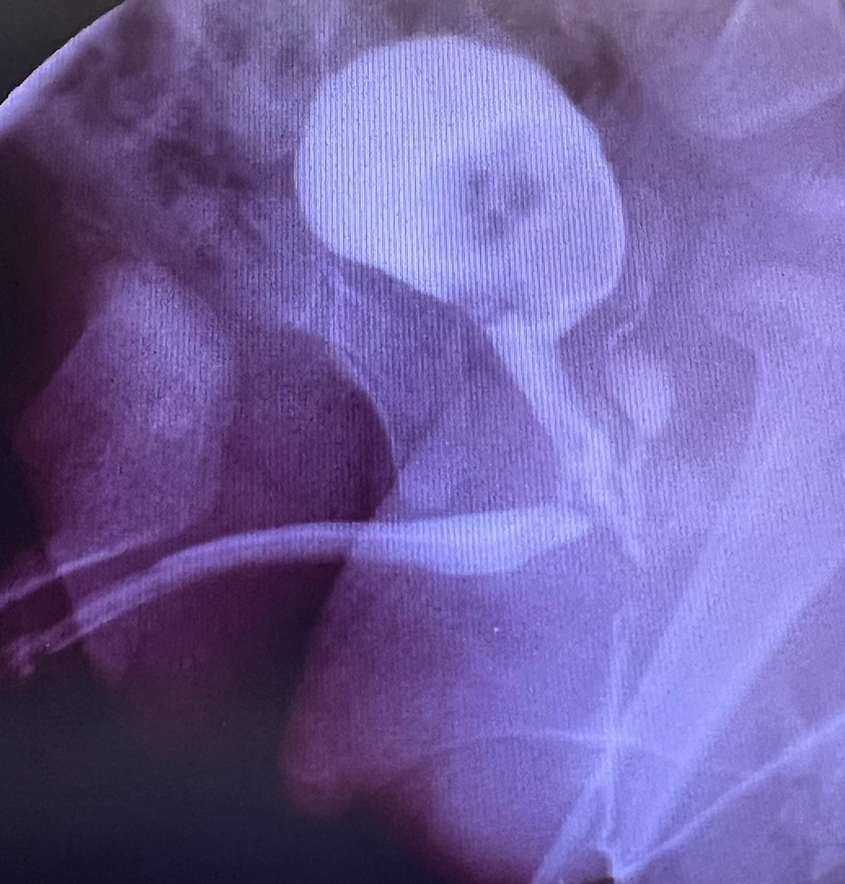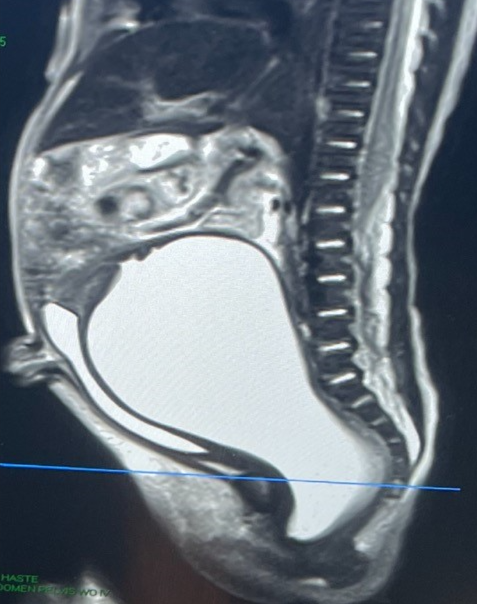Colorectal Quiz: March 20, 2023
March 13th Quiz
I received a query about a female patient born with imperforate anus. At birth no anus was identified and on exploration to perform a colostomy a pouch colon was found (colonic atresia). Due to the dilation of the colonic segment the surgeons chose to resect it and perform an ileostomy. Thereafter an ileoanal pull-through was performed. The child is now 3 years of age. She suffers from severe perianal excoriation. The contrast study is shown. What would you recommend be done for this child?
Answer for the March 13th Quiz
Unfortunately for this patient, resection of the colon has led to a situation whereby the patient cannot form solid stool. An ileoanal pull-through in ARM patient will never work – there is not adequate sphincters, and no anal canal to handle the liquid stools. This patient will need a permanent ileostomy. If faced with an ARM with a pouch colon (essentially colonic atresia), it is recommended to save the colon and pull that through to the anus. An ARM patient to remain clean must have the capacity to form solid stool, then they have a chance to achieve their own bowel control, or can remain clean with bowel management with either retrograde or antegrade enemas. This issue mostly comes up for cloacal exstrophy, and such patients need enough colon in order to consider a pull-through.

Quiz for March 20th
A three-year-old with total colonic Hirschsprung disease underwent an ileoanal pull-through in the first year of life. They present with abdominal distension and fever. What is your diagnosis and what is your treatment? X-ray is below.

How would you handle this case?




